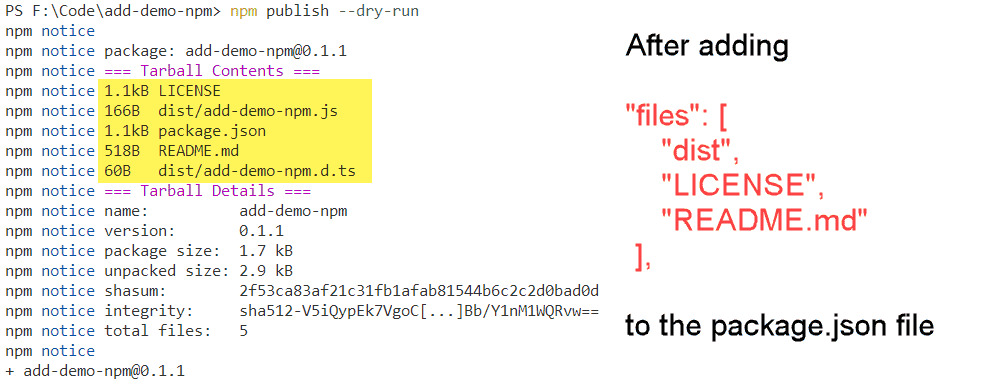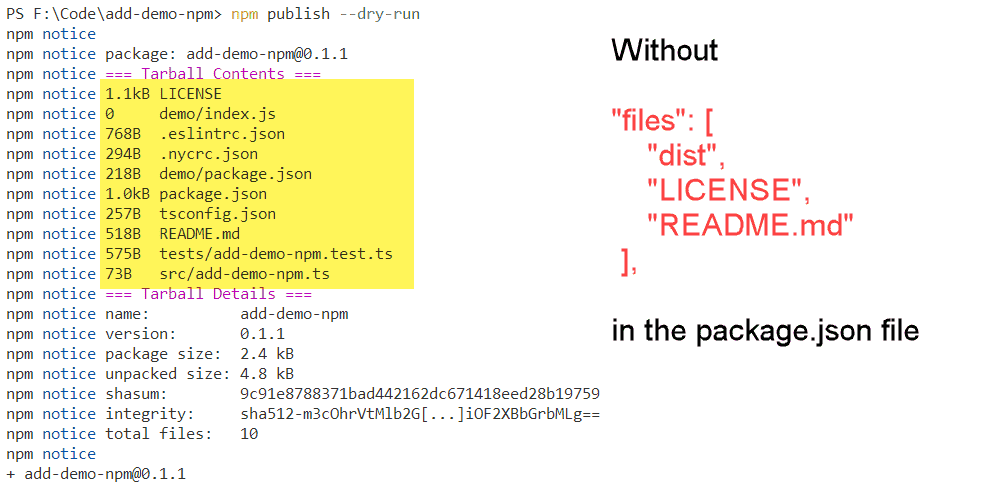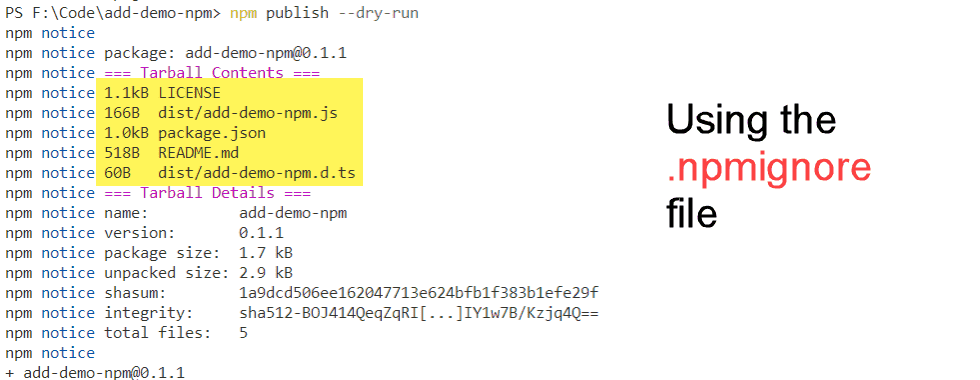- Published on ·
- Reading time 5 min read
What Really Gets Packaged?
Including and excluding files in your npm package
Share this page

Introduction
After publishing an article on developing and publishing an npm package using TypeScript, I received a suggestion on Twitter to “create .npmignore in addition to .gitignore or else your dist won't be included (if dist is in .gitignore).” While this is true (you don't need to add a .npmignore file if you're using the files field in the package.json file), given that all three approaches affect what get's included in your npm package, I wrote this article to try and demystify the process.
Let's take a look at these scenarios to understand what each outcome might look like and what would be the recommended approach.
Background
We'll continue to use this demo npm package for this article. The source code for this package can be found in GitHub. The assumption for this article is that the dist folder is added to the .gitignore file.
Scenario 1: Using files to include what you want
To explicitly specify which files you'd like to be included in the npm package, you can use the files field in the package.json file. You can directly specify the file or folder name or make use of a glob pattern. The code snippet below packages the dist folder and all the files inside the dist folder, the LICENSE file and the README.md file.
{
"files": ["dist", "LICENSE", "README.md"]
}
In fact, the LICENSE file, package.json file and README.md files (among a few other files) are included by default — so you can choose to not include that in the files field if you want, too. You can run the command npm publish --dry-run to confirm what files will be packaged.

In this scenario, the files field in the package.json file takes precedence over the .gitignore file. That is why even though the dist folder is in the .gitignore file, it is included in the npm package because we explicitly included it in the files field.
Scenario 2: Not using files
If you decide to remove the files field from the package.json file and try running the command npm publish --dry-run to see what files will be packed, you'll be amazed to find out that almost every other file will be included that's not part of the .gitignore file. This happens because when you omit the files field, it will set the default value of the files field to [“*”], which means it will include all files.

Therefore, in this scenario, the .gitignore file acts as an exclusion list only and anything that's not part of this file will be included in the npm package.
Scenario 3: Using the .npmignore file.
We definitely don't want every other file and folder to be included in the npm package for various reasons:
- It increases the size of the npm package.
- We don't want development files to be distributed.
To mitigate this, we can create a new file called .npmignore and list the files and folders we don't want to be packaged. An example might look something like the code snippet below.
.*
.*.json
tsconfig.json
tests
demo
coverage
src
Now, if we run the command npm publish --dry-run again, we'll find that our output looks similar to when we used the files field in the package.json file.

Therefore, in this scenario, since the .npmignore file is found, the contents of the .gitignore file are ignored.
Default inclusions and exclusions
As per the npm documentation, certain files are always included, regardless of settings:
package.jsonREADMECHANGES/CHANGELOG/HISTORYLICENSE/LICENCENOTICE- The file in the “main” field
README, CHANGES, LICENSE & NOTICE can have any case and extension.
Conversely, some files are always ignored:
.gitCVS.svn.hg.lock-wscript.wafpickle-N.DS_Storenpm-debug.log.npmrcnode_modulesconfig.gypipackage-lock.json(use shrinkwrap instead)- All files containing a
*character (incompatible with Windows)
Conclusion
In summary —
- I'd recommend using the files section in the
package.jsonfile over adding a.npmignorefile. It's better to explicitly mention what you want instead of listing everything you don't want to be included — it's more effort and there are chances that you might forget to add a new file to the exclusion list. - The files included in the files field of the
package.jsonfile cannot be excluded through.npmignoreor.gitignore. In fact, the.npmignorefile and the.gitignorefile are ignored. - Certain files are always included while on the other hand, certain files are always ignored regardless of the approach you take.
That's it. Thanks for reading!